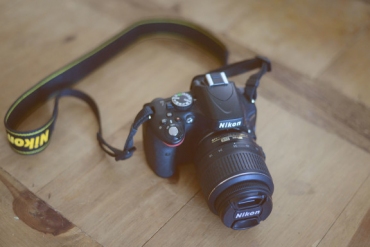Buying a new DSLR Camera can be a big investment, and many people find the decision-making process overwhelming. Cameras today have become more and more complicated with a variety of functions of which many beginners have a hard time making sense. The quality of any camera is, however, still determined by a few factors, and any photographer, no matter what level of experience, might want to consider these when venturing out into the market to buy one:
Decide Your Purpose And Budget
It is a good idea to start by thinking about what you will be using the camera for. Are you a beginner buying your first camera, or a professional looking to upgrade your equipment? Do you shoot for pleasure, as a hobby, as an artist, or a professional? Do you work in the studio or out in the field?
By answering those simple questions, you should be able to decide how much you would be willing to spend on this camera. Don’t forget to include all accessories and equipment to go along with your purchase, such as lenses, batteries, SD cards, flashes, and tripod. You can then look for the best camera within this budget and your specific needs through the next 4 steps.
Consider Image Sensors Rather Than Counting Megapixels
Megapixels used to be the deciding factor for most consumers when choosing a DSLR, but recently, photographers are becoming savvier and realize that this is after all just a number. While a camera can go up to having 35 megapixels, this does not determine the quality of images it produces. Alternately, you should factor in the image sensor in conjunction with the mega pixels.
Most DSLRs feature either a full-frame sensor, or an APS-C, which has a “crop factor” and usually goes together with wide-angle lenses. Bigger sensors can record more information as they have more light-sensitive photosites, and so the resulting images are of better quality with little noise. So, a 16-megapixel point-and-shoot would have smaller pixels than a DSLR of a greater resolution. The DSLRs larger pixels help you set it at faster ISO settings without the unwanted noise. This is one reason why mega-pixels alone cannot determine image quality.
Check Image Formats
Most DSLRs have a variety of image formats they can capture, but one important format to ensure your camera can capture is RAW, which saves a highly adjustable image. This image allows you a lot of control and freedom in post-production, and is easily edited in photo-editing software, Photoshop, and Lightroom plug-ins and apps such as those by Macphun for Mac OS without losing image quality. Professional Photographers tend to do most of their shooting in RAW mode, or in RAW+JPEG, so make sure you have this option.
Look For A Functional Design
The design of your camera is also as important as the inner workings. This is largely personal, as what may work for you may not work for the next person. Whichever camera you plan to buy, be sure to hold it in your hands and get a feel for it. It should not be too bulky or heavy, and should sit comfortably in your hands with easy access to all important buttons. The design should be functional and easy to use.
Check For A List Of Other Features
While the basic modes and functions such as manual mode, Shutter Priority, Aperture priority, and fully automatic (Program or P) and a few others are offered by most camera models, there may be a few variations. You should look at the list of features to ensure something important to you is not missing. You may want to look for:
– Burst Mode for a number of continuous shots with one click
– The maximum shutter speed as this is different for all cameras
– BULB mode for long exposure during night time
– ISO range – some cameras, like the high-end Nikon D4S, can go up to an ISO speed of 409,000 but more affordable cameras often offer up to 25600 ISO.
– Image Stabilization to counter minute vibrations of your hands for sharper images
– Built-in flash, which many high-end professional DSLRs don’t include
– Semi-auto shooting modes, such as “portrait”, “custom”, “night”, “sports”, “pets and kids”, etc., are included in entry level DSLRs but not more serious machines. If these attract you, make sure you have them.
– Video capabilities — depending on how important the occasional video capture is to you, this could be an important factor to research.
Since most DSLRs, even entry level ones, can be quite expensive, make sure you think long and hard and consider all these factors before whipping out the wallet. This will likely be your camera for the next few years, so make sure it’s the one you will want to stick with — and more importantly — grow into!
http://macphun.com/

